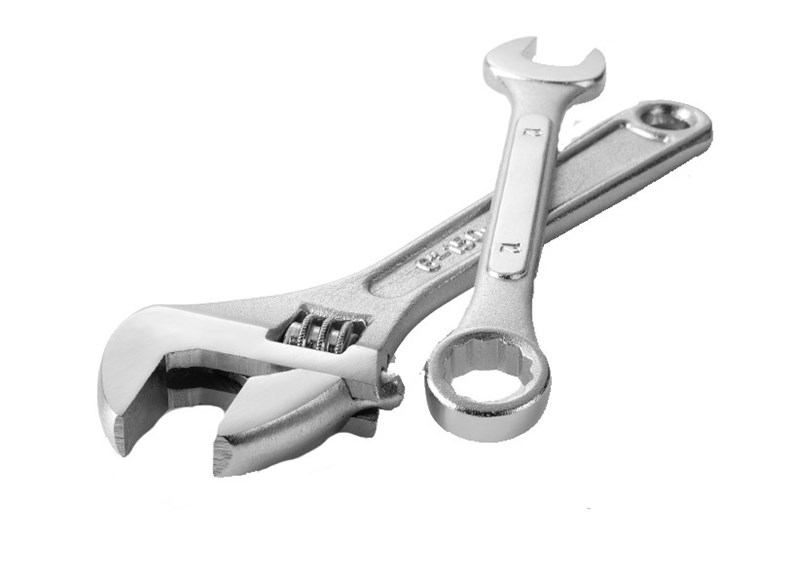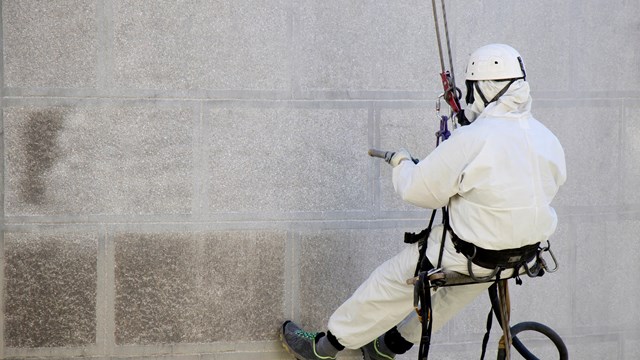The agenda for your monthly board meeting is to find ways to save money, and in the long run, increase the
building's reserve fund. Each board member has been asked to compile a list of ideas on areas of possible savings. One board member suggests eliminating the fresh flowers in the lobby. Another proposes turning off the air conditioning in the laundry room. And on everyone's list is the dreaded maintenance increase. As usual, everyone begins to argue. Then a third board member mentions energy efficient lighting and explains how the building can save money and cut back on energy consumption at the same time by replacing the incandescent lights with fluorescents. The room becomes silent and everyone is listening.
According to George Nunez, vice president of sales at Energy Saving Technologies, Inc., a full-service energy company that provides energy analyses for buildings, Co-ops and condos never really consider energy efficient lighting, they just buy new fixtures. We, on the other hand, look at the long-term results.
Energy Efficient Products
There are many different forms of energy efficient lighting and all offer significant energy and financial savings. Although they emit a very good quality of light and are used most often, incandescents are the least efficient light bulbs available. Fluorescents produce four times as much light per watt, meaning that a 40-watt fluorescent bulb gives more light than a 150-watt incandescent bulb. They are a little more expensive but last up to ten times as long. According to the National Lighting Bureau in Washington D.C., a fluorescent bulb has a life span of up to 20,000 hours, whereas an incandescent bulb lasts a maximum of only 2,500 hours.
The quickest payback is switching from incandescents to fluorescents, says Tom Sahagian, senior associate at the EME Group, a consulting engineering firm. In a cooperative corridor where two 60-watt incandescent bulbs comprise a light fixture, a 75 percent reduction of power and a savings of about $100 per fixture per year can be experienced if you install two 15-watt fluorescent bulbs, says Peter Berger, owner of Energy Saving Technologies. You can expect to save a little more than one dollar per watt per year in New York City if the fixtures are on 24 hours, he says.
Fluorescent lighting is typically used in hallways, mail rooms, laundry rooms and other service areas, but there are other potential locations for energy efficient lighting sources throughout the building. Replacing the existing bulbs used for the EXIT signs with LED (light emitting diode) bulbs can reduce the wattage from a 40-watt incandescent to a one-watt LED. Although these lights are on 24 hours a day, seven days a week, they do not need a lot of light. The LED bulbs burn out once every 25 years. According to Nunez, the LED bulb will result in a significant savings within only a year.
Exclusive to Energy Saving Technologies is the LESS System, a new technology installed in about ten Manhattan buildings. With this system, an occupancy sensor is installed in the fixtures in stairwells. When no one is in the stairwell the sensor will dim the lights to 20 percent illumination and when someone is in the line of sight, the sensor brightens to 100 percent illumination, reducing overall power consumption by 80 percent.
Outdoor lighting als ffb o accounts for a big expenditure of money and energy, especially if incandescents are used. HID (high intensity discharge) bulbs emit a very strong light and use a lower wattage consumption. The bulbs maximize efficiency and minimize operating costs and the number of fixtures needed. These lights cannot be used indoors because they emit a purplish hue, but are at least five times as efficient as incandescents.
Big Savings
Con Edison offers a rebate program for buildings that switch to more energy efficient lighting. According to a marketing representative for Con Edison's enlightened energy services, buildings can experience a rebate of ten cents per watt of electric-
ity saved when switching from either incandescents to fluorescents, from incandescents or fluorescents to HIDs or LEDs or from standard fluorescents to compact fluorescents. The rebate, which was offered at 25 cents, has been reduced to ten cents as of August.
Con Edison also offers a rebate of 60 cents per watt of electricity saved for outdoor security lighting. The cost for parts and labor for any rebate project is not covered by Con Edison. However, your bill will be reduced if the existing fixtures are replaced or converted. Eighty to 90 percent of existing fixtures can be converted to fluorescents, says Nunez. It's a great time to upgrade and you can justify the costs by converting. As long as the building is a commercial customer and a customer of record it can qualify for the rebate. Contact Con Edison for an application.
Savings have been seen at The Pinnacle, a condominium in Forest Hills, since it replaced incandescent lighting fixtures with fluorescent lighting in the hallways about three years ago. The 926 fixtures each used two 40-watt bulbs, which were replaced with two ten-watt fluorescents that produce the same amount of light as a 60-watt incandescent bulb. The project reduced the daily energy consumption from 74,080 to 18,520 watts. It doesn't make sense not to switch, says superintendent Angel Carregal. The savings can be seen within months, not just with Con Edison, but also because fewer bulbs are being purchased and less manpower is needed. The annual electrical costs for the 219-unit building dropped from about $159,000 to $129,000a savings of $30,00 per year.
In addition, The Pinnacle replaced the 75-watt incandescent lights in the lobby and banquet area with 15-watt screw-in fluorescents. The result was a daily energy savings of 4,620 watts.
At a small co-op on Central Park West, Nunez recently helped replace the 65 incandescent fixtures in the hallways with fluorescent lighting. What was once costing the building $75 per fixture per year, is now costing only $15 per fixture per year, for an annual savings of $3,900 per year.
Standard vs. Compact Fluorescents
While it is clear that significant savings result from switching to fluorescents, the switch from standard fluorescents to compact flourescents also results in savings. The standard fluorescent tubes, usually two or four feet long, use a magnetic or electronic ballast in or near the fixture which consumes a minimal amount of energy, usually two or three watts depending on the size of the ballast. The ballast is a device that provides the starting or stabilizing of the voltage needed in a circuit. If you still have the old fluoroscents, you can replace the larger bulbs that use a magnetic ballast with a smaller bulb that uses an electronic ballast. This will cut your electrical consumption in half, says Manuel Patino, director of project development at EUA Cogenex Inc., a nationwide company specializing in energy conservation projects.
The new compact fluorescent lighting is a smaller bulb, emits brighter light, comes with the ballast already built-in, uses screw-in bulbs and replaces incandescents. A seven-watt compact fluorescent can replace a 40-watt fluorescent.
An Interior Design Approach
George Stanton, vice president of Sygrove Associates, an interior design firm, recommends fluorescents in the hallways an c11 d service areas but not in the lobbies unless there is a ceiling cove. Lobbies should have a nicer quality of light, an intimate homey feeling you can't achieve with fluorescents.
Over the years fluorescent lighting has become more attractive and it now comes in different temperature controls which offer different degrees of color and design. When Sygrove Associates designs a hallway, they use three fixtures with different fluorescent bulbs and hang up sample wall coverings and carpeting to see what light looks the best with the materials. There is a lot of flexibility and improved quality of light with the new fluorescents. The old ones are slowly being phased out, says Stanton.
Saving money is the driving factor for co-op and condo buildings, says Nunez. Some buildings have the same fixtures for years. But technology has come a long way. Switching will result in the same amount of light but a cheaper electric bill and less energy consumption, he says.







Comments
Leave a Comment